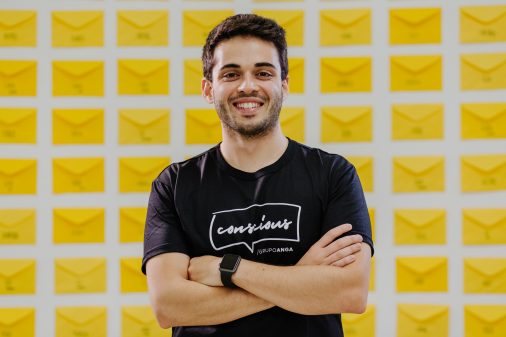

As with the start of every new cycle, people usually stop to reflect and set targets for the new time ahead. Personally, at the beginning of each year, I like to write things down, and then I have the chance to look back and see what I was thinking and compare it with what has happened. Even though the reality is quite different from the planning, there is much to learn from this exercise and it provides a sense of gratefulness for everything that happened in the past 12 months.
During my reflection at the beginning of 2022, I realized that the perception of what was going on in the world was missing in my mind. After approximately two years of living with the COVID-19 pandemic, it is already a cliché to say that many things have changed: the way people work (reference from McKinsey & Company); how supply-chain processes will be revised (from just-in-time to just-in-case – reference from New York Times); and, significantly, the urgent call to action for a more sustainable future highlighted by the COP 2021 Summit in Glasgow.
Each of these points brings a variety of topics and complex discussions that are far from my competencies to discuss and elaborate on. However, I see an element as transversal throughout every relevant talk we are about to have this year, and that is innovation. According to professor Clayton Christensen, one of the authors of the book Prosperity Paradox, innovation can absorb three different connotations: incremental innovation, maintenance innovation, and the creator of new market innovations.
Independently of each lens you want to use or definition you wish to pick, the idea that we desperately need new, sustainable, innovative, and scalable solutions for the problems we face as a society (the SDGs give us critical guidance) is evident. To do that, one of the main challenges leaders and managers are responsible for is to overcome the homophily biases – defined by psychologists as a tendency to be drawn towards others who are similar to us or to like the same things -, and genuinely seek hidden opportunities and/or undervalued ideas that are there, be it on the market or even in your organization.
To make 2022 a truly new year, it would be great to embrace a new outlook within our perspectives and goals for the next 12 months. Understanding how our biases guide our decision-making process and adapting to the context around us is crucial to improving and managing an organization that embraces and promotes innovation. This creates new perspectives to encourage a better future with diverse thoughts, ideas, and people. I hope you can find a place in your new year’s resolution to add this kind of idea!
